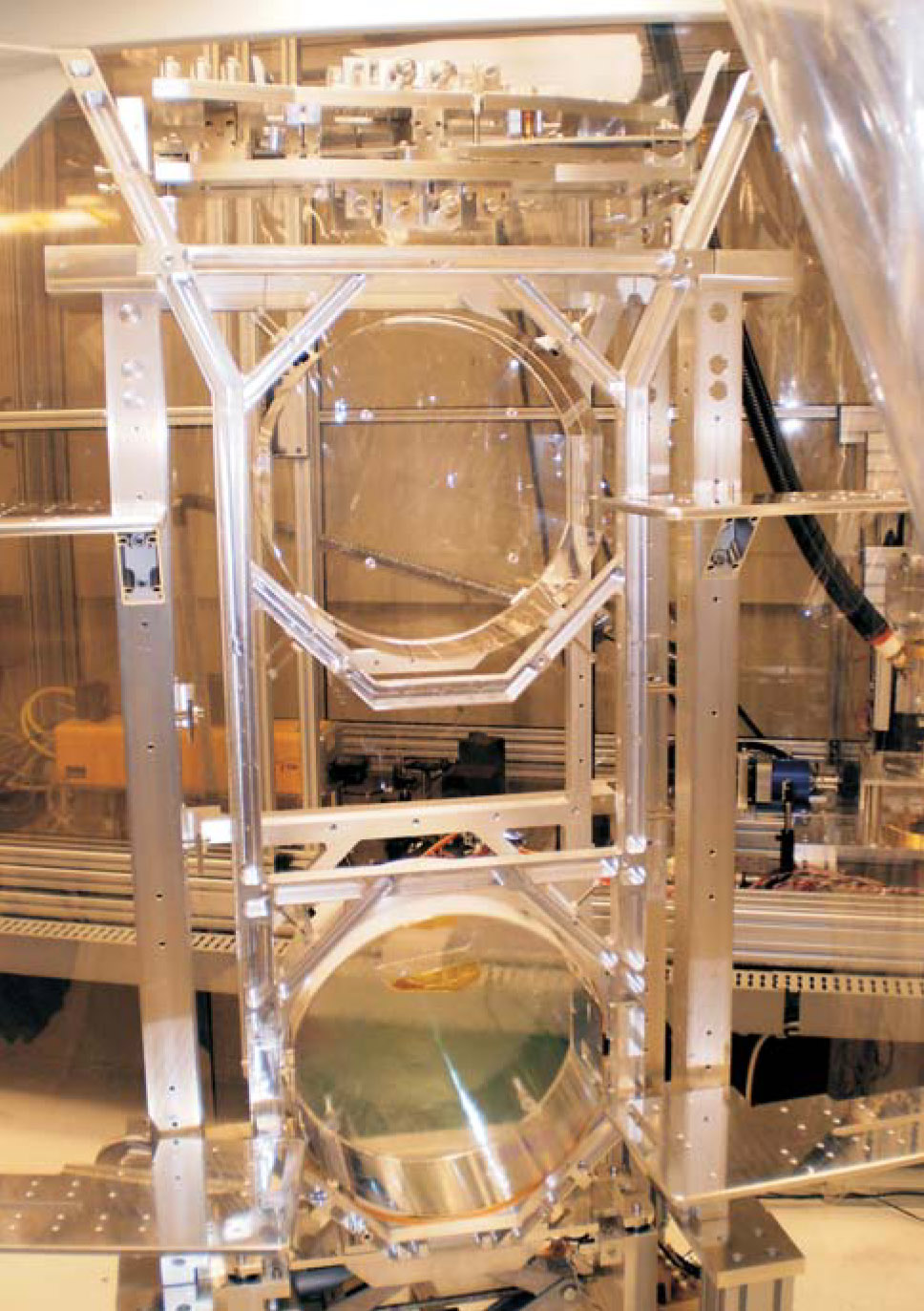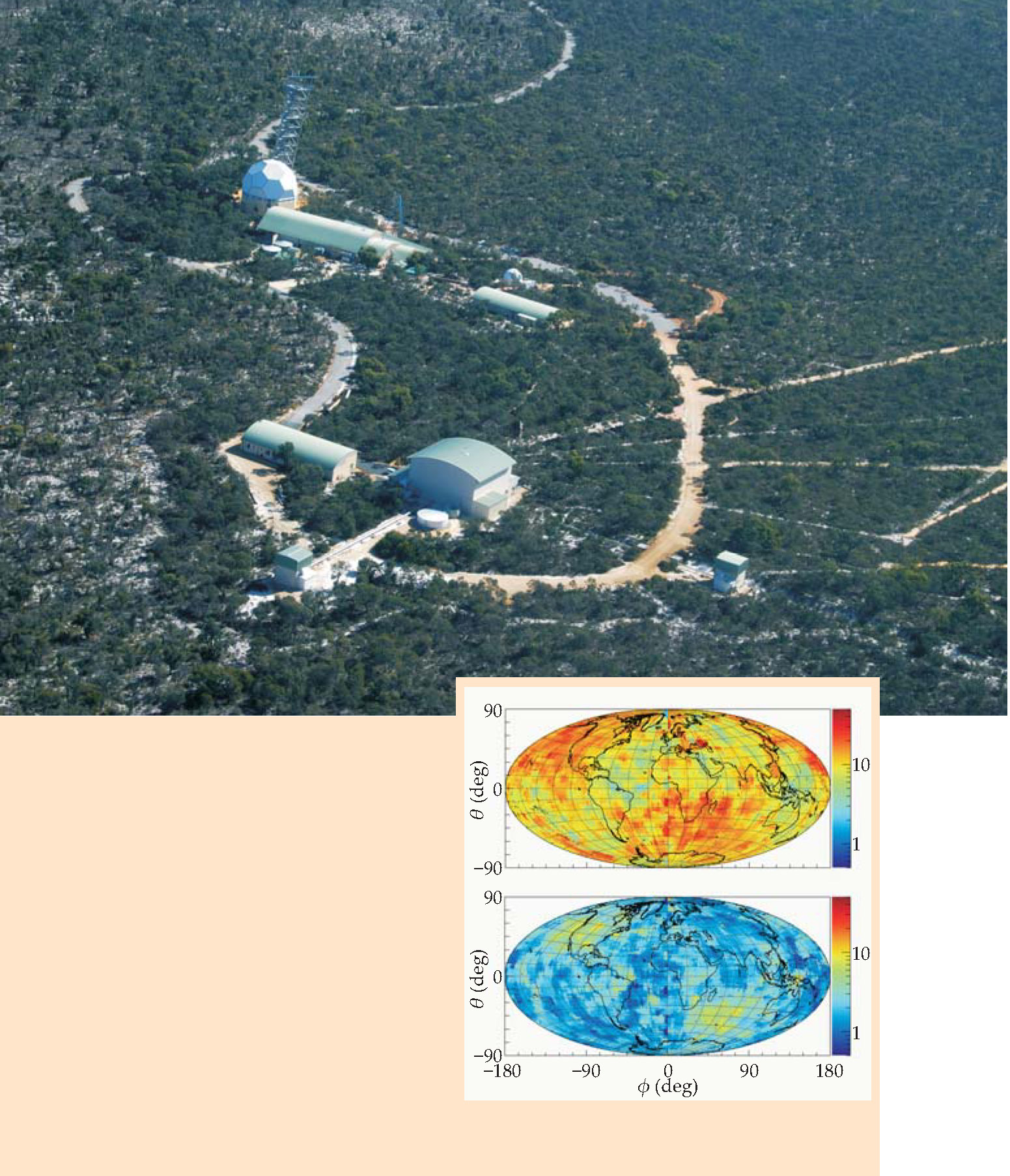LIGO relocation would boost gravitational-wave science
DOI: 10.1063/1.3528999
After about a decade of operations, during which no gravitational waves were identified, the Laser Interferometer Gravitational-Wave Observatory’s detectors—two in Hanford, Washington, and one in Livingston, Louisiana— were turned off on 20 October. An upgrade to what will become the Advanced LIGO originally involved increasing the sensitivity at those sites to detect events up to 10 times farther away, thus expanding by 1000-fold the volume of accessible universe. The improvement can be summed up as going from a predicted single event in 30 years to an event every week or so. But by placing one of the Hanford detectors in Australia, signals could be not only seen but their position on the sky determined, says Jay Marx, a particle physicist at Caltech and executive director of LIGO Laboratory, the Caltech-MIT hub of the project. (The full project consists of some 800 scientists from about 80 institutions worldwide.) “After chairing a committee to develop a strategic plan for the future of the field, it just hit me that it would be better to have one in Hanford and one in Australia,” says Marx.
That idea was reviewed by NSF, and in late summer it got the conditional stamp of approval from the National Science Board. In 2008 NSF committed roughly $205 million to the upgrade; inkind contributions from Germany, the UK, and Australia total another $25 million. If it takes on the role of host, Australia would pay running costs plus provide a building and vacuum system for an estimated Aus$140 million ($140 million).
Pointing to the country’s tight economy and relatively small population— about 7% of the US’s—LIGO Laboratory chief scientist Stan Whitcomb of Caltech says, “Projects over $100 million are not easy in Australia. I think we have a big uphill battle to fight. We are working as hard as we can.” Still, since Marx first proposed the idea in October 2009, Whitcomb has raised his estimate of the odds from “unlikely” to “definitely possible.”
The hitch is that Australia must sign on by October 2011; a delay would stall the upgrade at Hanford. The upgraded US detectors are slated to go on line at less-than-full sensitivity in 2014. If it goes forward, a detector in Australia could start up in 2017.
Where did the signal come from?
Merging black holes and other cosmic events are predicted to create gravitational waves that stretch and squeeze spacetime by up to one part in 1021. That corresponds to a change in the LIGO detectors’ kilometer-scale arm length of the order of one-thousandth the diameter of a proton. Sufficiently sensitive laser interferometers should pick up such gravitational ripples. Individual detectors, however, are not very direction sensitive; times of signal arrival from several sites would be used to triangulate back to a source. For any new signal, says Whitcomb, “The first thing everyone will ask is, Where did the signal come from?”
It turns out that an instrument near Australia’s west coast would give the best triangulation. The calculated improvement (see figure) takes into account the three existing Northern Hemisphere sites: Hanford and Livingston in the US, and near Pisa in northern Italy, home to Virgo, which is undergoing a similar upgrade in sensitivity and cooperates with the US-led experiment. (A detector of comparable sensitivity is also planned in Japan; see the story on

Like a bobbing cork in a stream that reveals the motion of surface water, a 40-kg monolithic fused-silica test mass rides on a point in spacetime and responds to stresses and strains. That’s the setup in the Advanced Laser Interferometer Gravitational-Wave Observatory. To be isolated from noise, the test mass (lower element in the prototype shown here) hangs on silica fibers from a buffer fused- silica mass. The test mass doubles as a mirror in the gravitational-wave detector interferometer.
UNIVERSITY OF GLASGOW

The ability to locate sources would enhance Advanced LIGO’s collaborations with telescopes. For example, says Marx, “Looking at gamma-ray bursts through different eyes will give complementary information. You learn different things from how they emit in gravitational waves and in the electromagnetic spectrum.”
Advanced LIGO is keeping the buildings and vacuum systems from the initial LIGO. In the earlier setup, the Livingston site housed an interferometer with 4-km-long arms, and at Hanford two interferometers—one with 4-km and one with 2-km arms—shared a single vacuum system. Having three detectors aids in ruling out false signals. In Advanced LIGO all three interferometers—whether two are at Hanford or one goes to Australia—will have arms 4 km in length. The detectors themselves will be mostly new. Getting the 10-fold increase in sensitivity involves “changes in all the parts,” says MIT’s David Shoemaker, who leads the Advanced LIGO project. “We will have more photons used in a cleverer way, and reduced thermal and seismic noise,” he adds.
Along with more powerful lasers— which were designed and contributed by the project’s partners in Germany—and an innovative signal-recycling mirror, Advanced LIGO will have improved seismic isolation provided by the experiment’s UK partners.
Working the political system
Advanced LIGO “is a fantastic opportunity for Australia to participate in a large international project,” says Robyn Owens, deputy vice chancellor of research at the University of Western Australia. But, she notes, the investment required is “serious” and the project is indirectly competing with a synchrotron light source, supercomputing facilities, geological and marine facilities, Australia’s bid to host the international Square Kilometer Array radio telescope, and other science projects.
Led by the University of Western Australia, five top universities have teamed up to lobby to bring Advanced LIGO to Australia. They plan to submit a proposal by the end of the year. And, says Owens, “we are making sure that the current science minister and funding ministers know what we are doing, so that it is within the national conversation. We have to work the political system.”
The time limit puts pressure on the whole endeavor, admits Owens. “But even if it does not come off, our researchers will be involved in the project.”
“People would have been surprised if we saw something with LIGO,” says Shoemaker, but whether the observatory’s third leg is in Australia or in the US, “they will be shocked if we see nothing with Advanced LIGO.”

If it goes to Australia, the Advanced Laser Interferometer Gravitational-Wave Observatory detector will join an 80-m interferometer, a couple of telescopes, and other scientific facilities near Gingin in western Australia (above). The error in pinpointing the position of a gravitational-wave source takes a dive from about 10-20° with the third detector from Advanced LIGO in Hanford, Washington (upper inset plot), down to 1-2° if that detector goes to Gingin, Australia (lower inset plot). A simulation with sources distributed uniformly in the sky was used to estimate the localization error, shown in degrees by the color scale; the error increases from blue to red. The horizontal axis is longitude, and the vertical axis is latitude.
(Plots courtesy of a group led by Sergey Klimenko at the University of Florida and the National Institute of Nuclear Physics, Padua, Italy.)

More about the Authors
Toni Feder. American Center for Physics, One Physics Ellipse, College Park, Maryland 20740-3842, US . tfeder@aip.org





